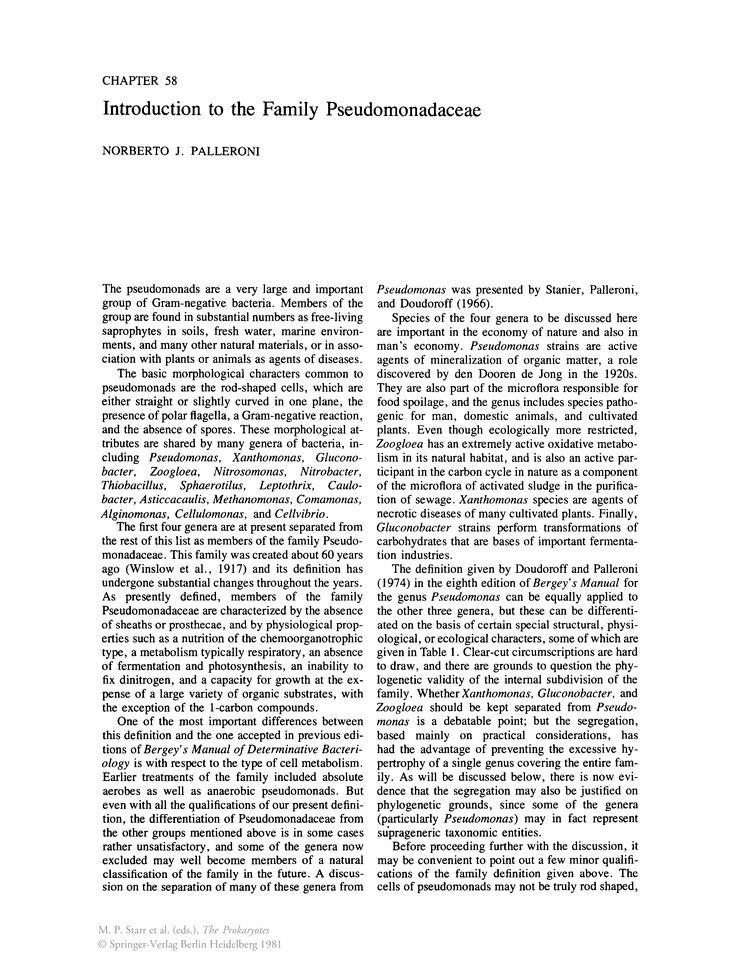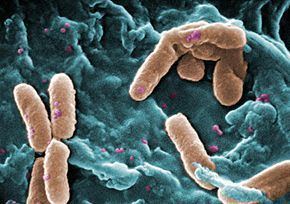Higher classification Pseudomonadales | Phylum Proteobacteria Scientific name Pseudomonadaceae Rank Family | |
 | ||
Lower classifications Pseudomonas, Aeromonas, Pseudomonas aeruginosa, Aeromonas hydrophila | ||
The Pseudomonadaceae are family of bacteria which includes the genera Azomonas, Azomonotrichon, Azorhizophilus, Azotobacter, Cellvibrio, Mesophilobacter, Pseudomonas (the type genus), Rhizobacter, Rugamonas, and Serpens. The family Azotobacteriaceae was recently reclassified into this family.
Contents

History

Pseudomonad literally means false unit, being derived from the Greek pseudo (ψευδο - false) and monas (μονος - a single unit). The term "monad" was used in the early history of microbiology to denote single-celled organisms. Because of their widespread occurrence in nature, the pseudomonads were observed early in the history of microbiology. The generic name Pseudomonas created for these organisms was defined in rather vague terms in 1894 as a genus of Gram-negative, rod-shaped, and polar-flagellated bacteria. Soon afterwards, a large number of species was assigned to the genus. Pseudomonads were isolated from many natural niches. New methodology and the inclusion of approaches based on the studies of conservative macromolecules have reclassified many species.

Pseudomonas aeruginosa is increasingly recognized as an emerging opportunistic pathogen of clinical relevance. Studies also suggest the emergence of antibiotic resistance in P. aeruginosa.

In 2000, the complete genome of a Pseudomonas species was sequenced; more recently, the genomes of other species have been sequenced, including P. aeruginosa PAO1 (2000), P. putida KT2440 (2002), P. fluorescens Pf-5 (2005), P. fluorescens PfO-1, and P. entomophila L48. Several pathovars of Pseudomonas syringae have been sequenced, including pathovar tomato DC3000 (2003), pathovar syringae B728a (2005), and pathovar phaseolica 1448A (2005).
Distinguishing characteristics

The presence of oxidase and polar flagella and inability to carry out fermentation differentiate pseudomonads from the Enterobacteriaceae.
